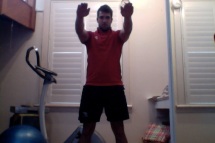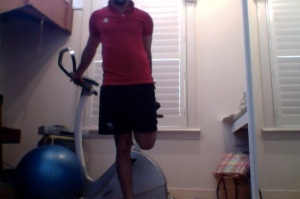Stretching is essential for many reasons in maintaining health & wellness. It can be done by anyone, at any time – and is very easy to do, and it is alright if you are unsure as I will show you how in this post. In general, the main benefits attained from stretching include:
- Increased flexibility or Range of Motion (ROM)
- Reduced likelihood of injury
- Improved benefits when completing aerobic & resistance exercise
Before I go on, I would just like to let you know, I have created a new Facebook page called Exercise Cancer Community: Health & Wellness, to create a supportive environment for people to share their experiences. Please visit the page, click the Like button on the side of this page or on the FB site and pass it on.
Now, stretching is important for basically anybody to maintain or improve their physical health, but it is particularly important for cancer survivors who have undergone treatment such as a surgery. For example, women with breast cancer who have undergone a mastectomy tend to experienced reduced should flexibility, strength & mobility due to muscle and tendon tissue damage. In fact, here is a great article by Dr Robert Kilgour displaying that home-based stretching can assist in reversing these results, as published in the Journal of Breast Cancer Research Treatments. By engaging in stretching exercises (and eventually resistance training exercises), you will be able to achieve a level of health pre-surgery, or even greater. But if not, simple daily tasks around the house such as reaching into cupboards above the head, discomfort whilst driving or picking up a baby may become challenging.

Here is an example of a “spider-crawl” or “wall walk”, where you slowly raise your arm up the wall to the level of your range (not to pain)
Before I show you individual stretches, here are the guidelines for stretching:
- Stretches can be done daily or most days of the week (can do them up to 3-5 times/day)
- Hold each stretch for 15-30 seconds
- Repeat each stretch 1-3 times on each side
- Have a deep breath in when commencing the stretch
- Only complete the stretch to the full range of your joint (and not to a painful point)
- Stretching is most effective when the muscles are warm, so after a walk is perfect
Here we go: If you are only a few weeks post surgery (1-3 weeks), you may consider doing “range of motion” exercises, that is just moving your joints to their point, and not pushing further.
Above: Shoulder flexion & extension
Above: Shoulder abduction
If these are simple, then lets move on to more stretches for the upper body:
Chest stretch:
- Arm at 90 degrees against a wall, with forearm on the wall
- Rotate body away from wall & hold
Shoulder stretch:
- Arm across the body
- Other hand presses the elbow closer to the body & hold
Triceps stretch (only if your flexibility allows you to do so):
- Arm above and behind your head, with elbow in the air
- Hand above your opposite shoulder
- Using your other hand, pull the elbow across your body & hold
Biceps & forearm stretch:
- Arm directly in front, with fingers facing downwards
- Using opposite hand, pull the fingers back & hold
Do you see how simple some of these are? Definitely can be done at the office, in an elevator or at home! I constantly will be doing stretches to help aid my training sessions in the gym and at soccer around the office. Now here are some lower body stretches to do for the lower body:
Calf stretch:
- Place hands on the wall
- Take a step backwards with one leg, with foot placed flat on the ground
- Bend the front leg, straighten the back leg and feel the stretch

With both feet flat, act as if you are trying to push the wall down. You should feel this in the back of your behind leg
Hamstring stretch:
- (seated or on a yoga mat) put one leg out as straight as you are able to
- Lean towards your foot, with your hands together
- Aim to keep your back straight
- Point your toe backwards for a greater stretch
- Resistance bands can also be used for a greater stretch

If you are more mobile and have progressed your flexibility, try a greater stretch using a resistance band
Quadriceps stretches:
- Find a stable object for support (wall, table, exercise bike!)
- Grab your foot of the leg you are stretching
- Keep legs in-line with each other and pull until you feel a stretch
- You can also use a resistance band or rope around your foot to assist if you have limited flexibility
Remember, every day you can partake in stretching, and before you know it, you will be improving your flexibility in no time. Combine this with your aerobic and resistance exercise and you are on your way to achieving a fantastic lifestyle.
Keep up the great work and please remember to provide encouragement to those in need, pass this resource on and keep continuing to send me questions and personal experiences.
Your Exercise Physiologist,
David















